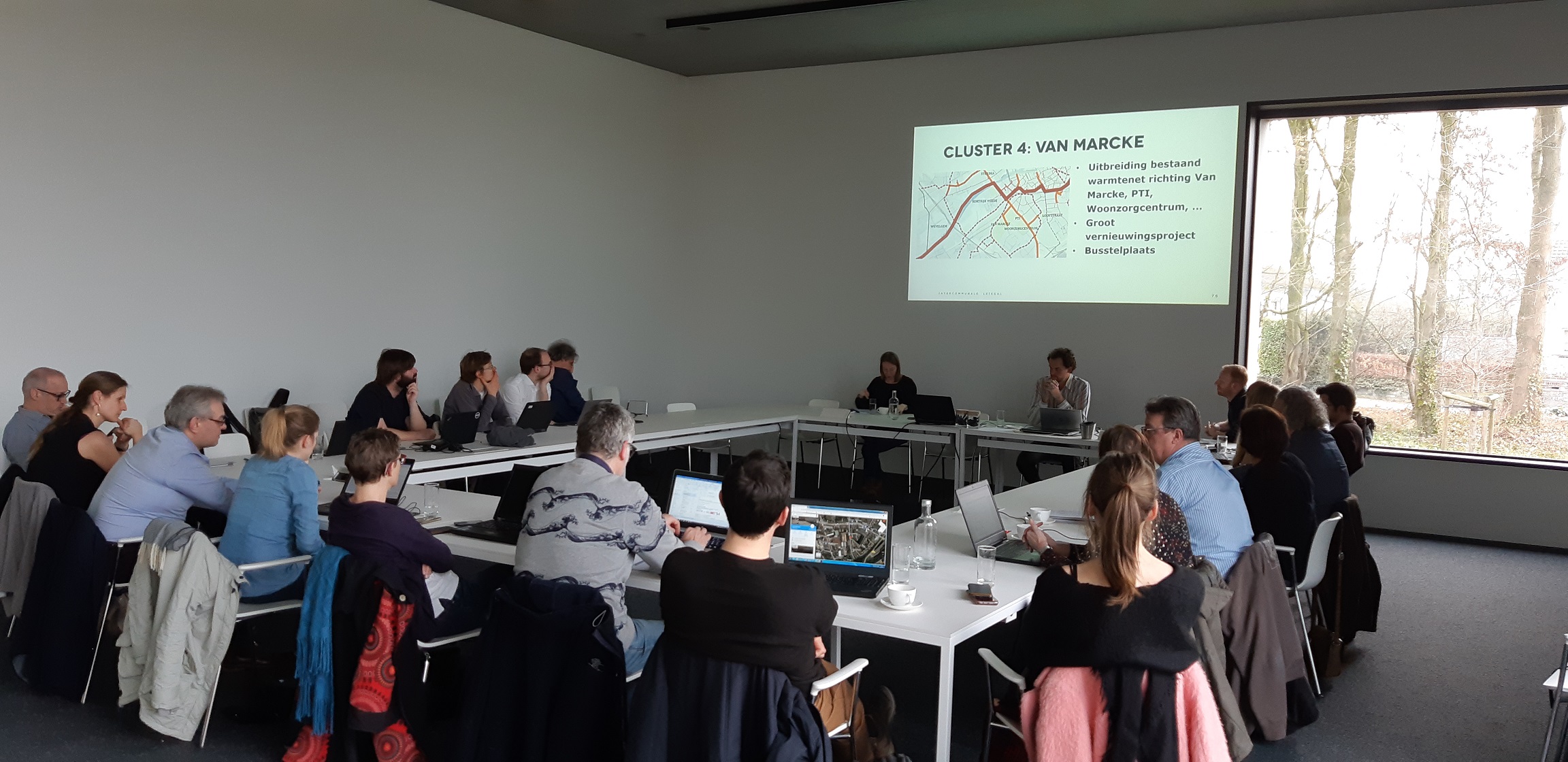The HeatNet NWE partner of Leiedal made a transition roadmap for the South-West Flanders region to research which kind of efforts are needed to make the region energy neutral and to further develop district heating in South-West Flanders. This transition roadmap for the region is a very useful exercise and during a workshop week a team of experts applied it to Kortrijk. Climate specialists, spatial planners, engineers, etc. investigated three main questions: how to make the city of Kortrijk energy neutral by 2025-2050 (a promise in the Covenant of Mayors), where can we find opportunities to implement more district heating and how can districts become energy and climate neutral?
The results of these workshops were presented on two separate moments.
Research shows that we now have, with all current measures, a carbon reduction of 11%, but to meet the goals of the Covenant of Mayors that percentage is too low and needs to be increased to 20% by 2020 and 40% by 2030. How can we make that percentage higher?
The region is already getting 8,8% of its energy from renewable sources, but also that percentage needs to be higher. It’s crucial to keep an “and-and” purpose in mind concerning the implementation of these measures because all available technologies will have to be used: wind energy (through wind harvesting areas and a lot of extra turbines), solar energy (if we cover 14% of the total region in solar panels, we can be energy neutral), district heating and other measures (like cold-heat storage). Only then the transition story will be viable.
For Kortrijk, most of its energy demand is in heat demand for homes, so there is a lot of potential there for carbon reduction. There is also a lot of excess heat available, but not always at the right place of in the right manner. To map all of this, a heat zone map was made on which 6 potential sites were marked that have a high potential for installing district heating as an interesting and profitable investment (taking some requirements into account). An expansion of the current district heating system at Kortrijk Weide, within the HeatNet NEW project, is one of those potential sites.
46% of the heat demand in Kortrijk can be connected to a district heating system; most public buildings too and in that area the city of Kortrijk could lead by example. Doing this could lead to a carbon reduction of 18% in Kortrijk. Where district heating is not viable or profitable, we need to go for energy reduction and ‘all-electric’ solutions like heat pumps and solar boilers.
Where possible, district heating solutions could be linked with other climate adaptation measures like the construction of bicycle connections and the removal of hard surfaces in cities, thereby creating more space for water and green areas. Where, for example, new bicycle lanes and/or a wadi are installed we could simultaneously insert heating pipes for district heating. This means there would only be road works once, the city loses some hard surface and we can meet some of the heating demand.
Conclusions of the workshop: the time to act is now, if we want to meet the climate neutral goals for the region; we will have to implement all types of renewable energy at the same time and a specific plan of action needs to be made for the city of Kortrijk and the region to be able to make a giant leap and effectively start with the implementation of the work!
Read the original article (in Dutch)

